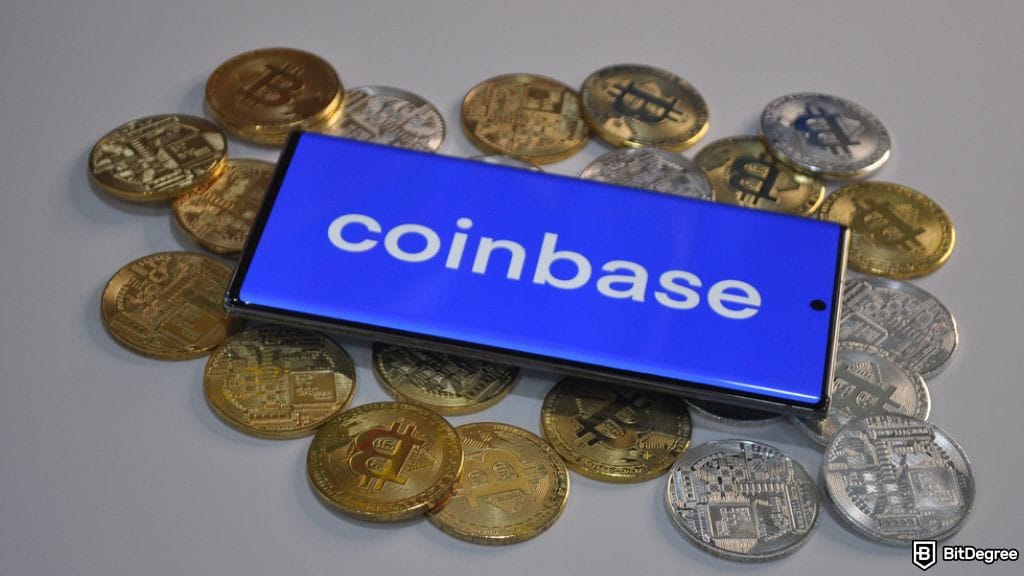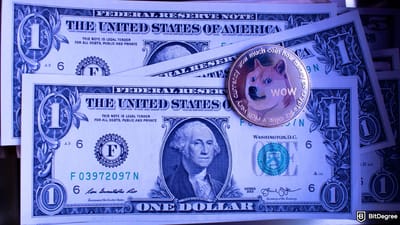Key Takeaways
- Coinbase Advanced makes it easier for traders to short crypto with a clean interface and regulated futures products;
- Shorting on Coinbase isn’t free, so watch out for trading fees, funding rates, and liquidation costs, especially if you're using leverage or holding positions long-term;
- Not all countries are supported by Coinbase, so before getting started, make sure the platform is available in your region.
Stop overpaying - start transferring money with Ogvio. Sign up, invite friends & grab Rewards now! 🎁
Learning how to short crypto on Coinbase can be a great starting point if you're curious about making a profit when prices go down. While shorting may seem complicated at first, Coinbase’s Advanced platform makes it more approachable with its user-friendly interface and regulated futures products.
To help you get started, I’ll walk you through a step-by-step tutorial on how to short on Coinbase, from setting up your account to placing your first short trade.
Based on my own experience, Coinbase does a quite solid job when it comes to shorting crypto. Still, Binance and Bybit offer more flexibility and features, to be honest. That said, it’s still essential to compare your options, especially if you're seeking lower fees, a wider range of coin selections, or specific features such as higher leverage or access to testnets.

Did you know?
Subscribe - We publish new crypto explainer videos every week!
How to Use Crypto? 5 Rewarding Strategies Explained (Animated)


Table of Contents
- 1. How to Short Crypto on Coinbase
- 1.1. Create a Coinbase Account and Verify It
- 1.2. Fund Your Account
- 1.3. Navigate to Coinbase Advanced
- 1.4. Place an Order
- 1.5. Monitor Margin and Avoid Liquidation
- 2. Fees to Expect When Shorting on Coinbase
- 3. What are the Best Platforms to Short Crypto?
- 4. What are the Key Considerations When Shorting Crypto?
- 5. Tips for Shorting Crypto
- 6. Conclusions
How to Short Crypto on Coinbase
Performing the steps on how to short crypto on Coinbase may seem intimidating at first, especially if you're new to futures trading or the idea of profiting from bear markets. But don’t worry; Coinbase Advanced makes the process surprisingly beginner-friendly.
Latest Deal Active Right Now:I’ll walk you through each step of shorting crypto on Coinbase, from creating an account to placing your first order and monitoring the trade afterward.
Create a Coinbase Account and Verify It
The first step on understanding how to short Bitcoin on Coinbase (or other coins) is to create an account. Luckily, the process is generally easy with Coinbase’s intuitive interface. Here’s how:
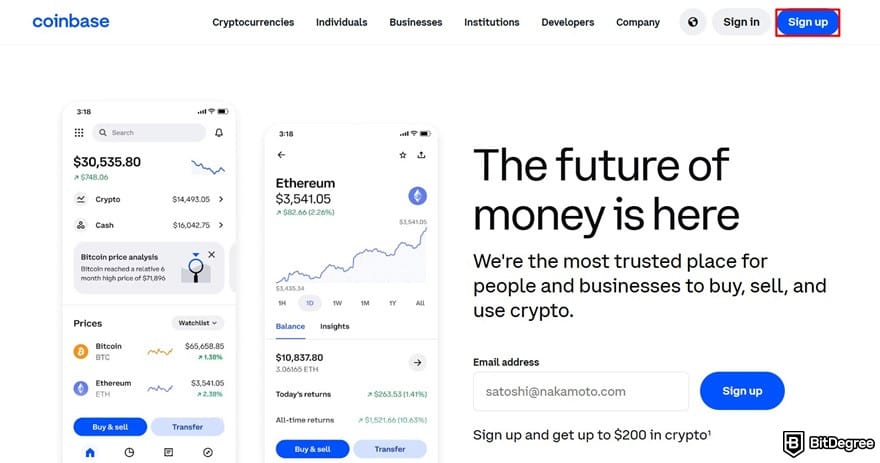
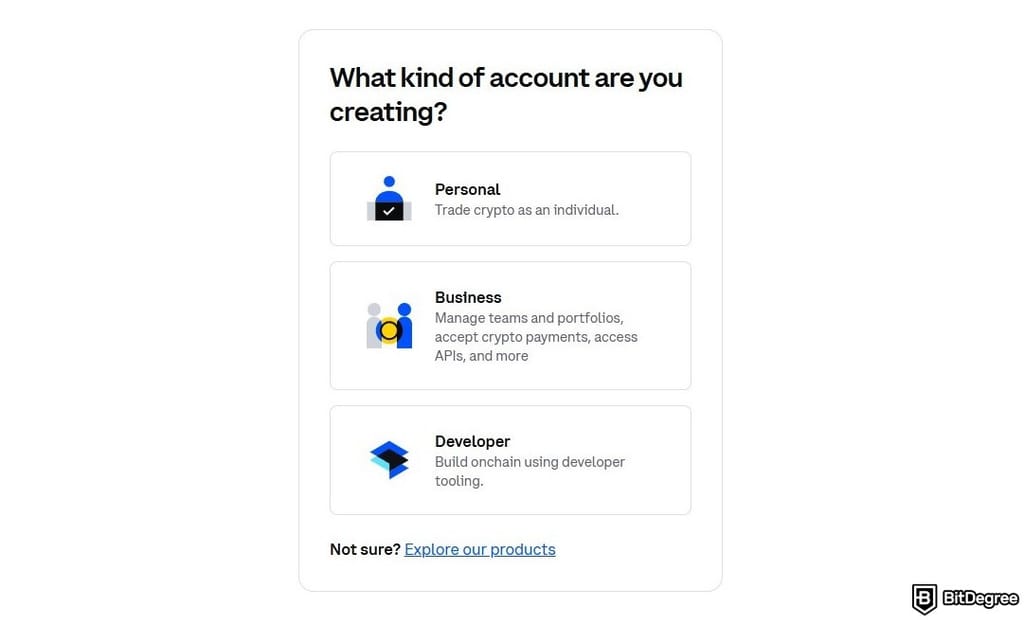
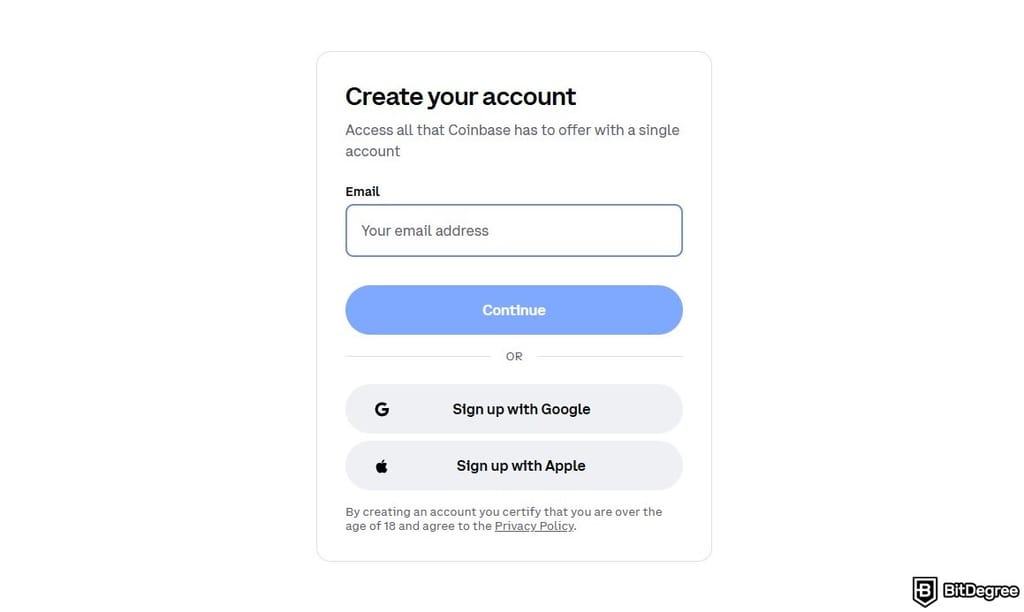
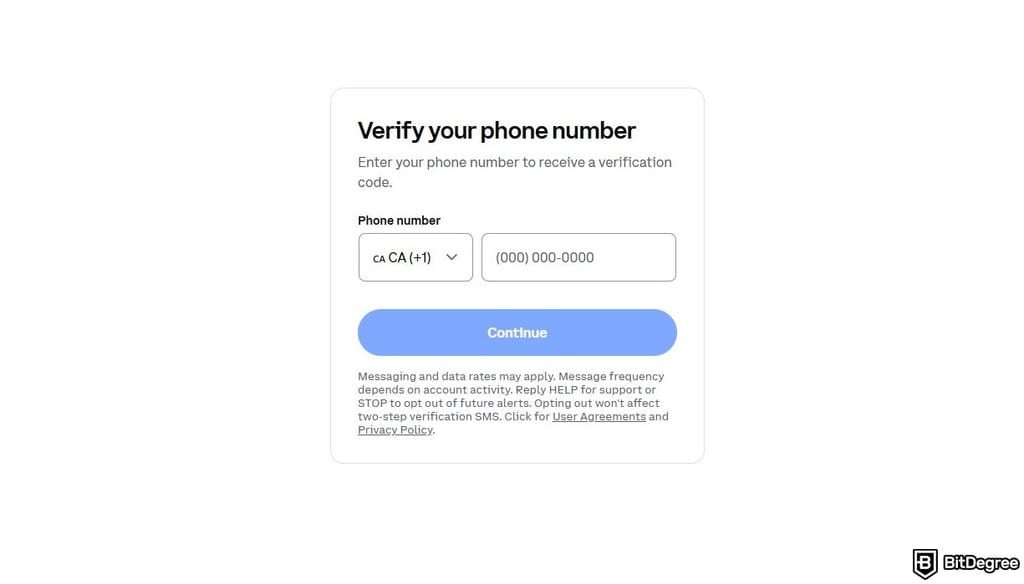
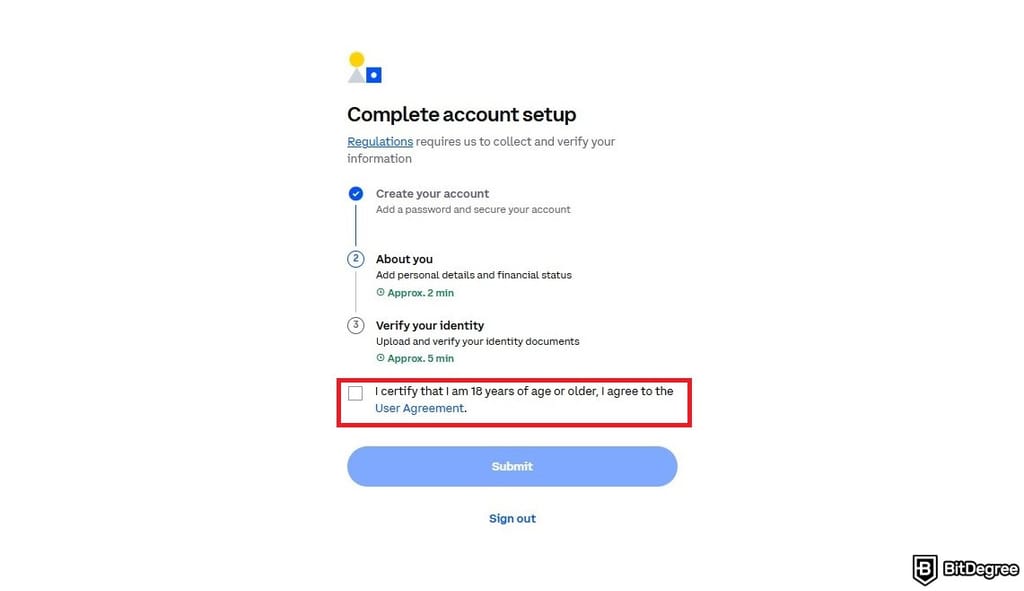
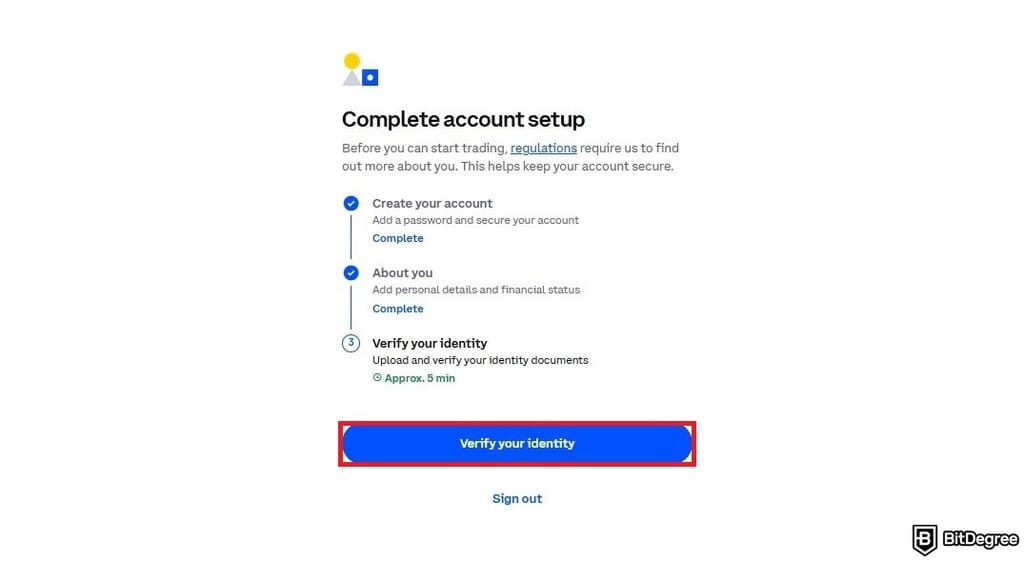
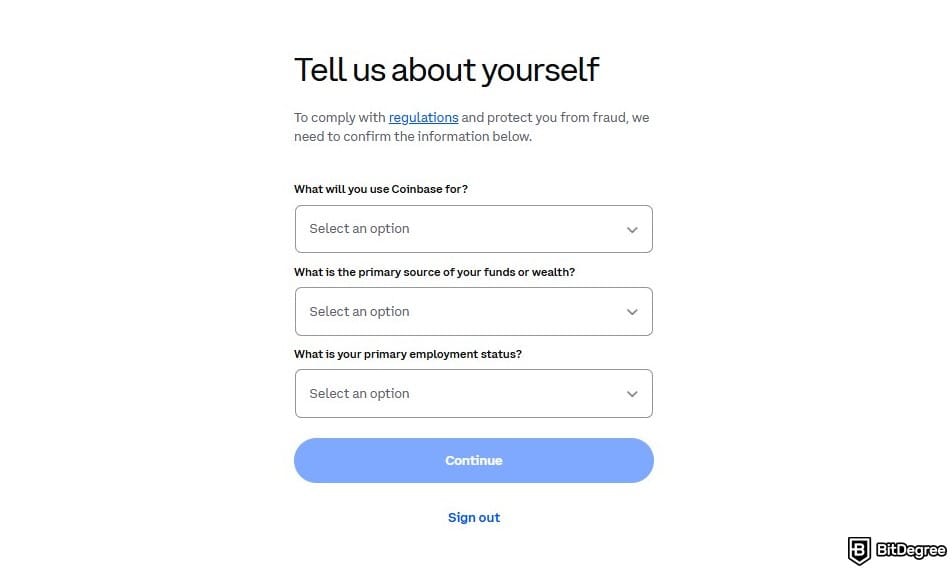
You now have a Coinbase account set up. The process is fairly straightforward, thanks to Coinbase’s clean navigation and user-friendly design, although it can feel a bit overwhelming to fill in all the required details the moment you register.
To make the process faster, I recommend having your ID card or driver’s license ready and being prepared to answer questions about your background and how you plan to use the platform.
📚 Read More: Coinbase Review
Fund Your Account
Even though you’re borrowing crypto when shorting, you still need to deposit cash or stablecoins into your wallet before placing any trades. This is applicable to most exchanges that offer futures or margin trading.
Shorting means you're selling a crypto asset now in hopes of buying it back later at a lower price. However, since you’re borrowing the asset to do this, the exchange needs proof that you can cover any potential losses. That’s where your initial deposit (also called margin) comes in.
Your margin acts as a safety buffer to protect both you and the platform if the trade goes in the wrong direction. So, how much do you need to deposit? It depends on the leverage you’re using. For example, with 10x leverage, a $100 trade requires around $10 in margin.
For Coinbase short selling, you need to trade through its futures section, since Coinbase doesn’t offer shorting via spot trading.
Note that futures trades on Coinbase can only be funded with USD. Here’s how to deposit the fiat currency on your Coinbase app:
![]()
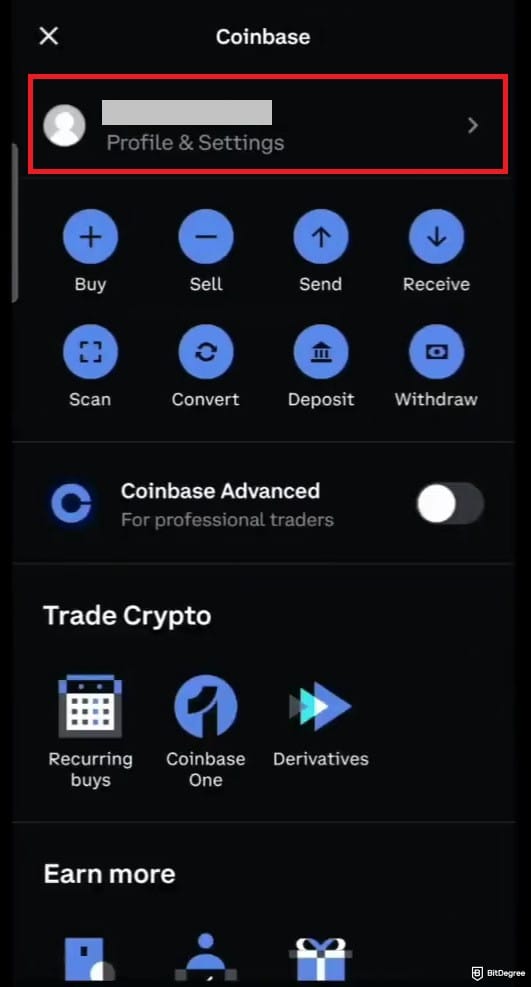
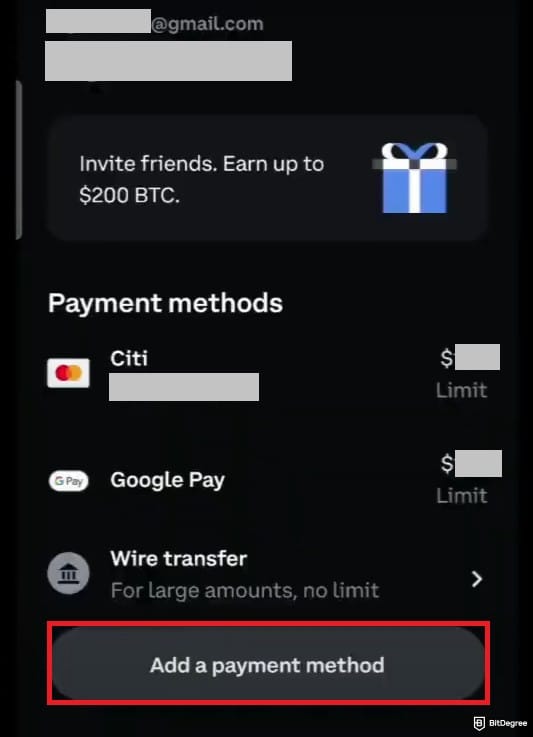
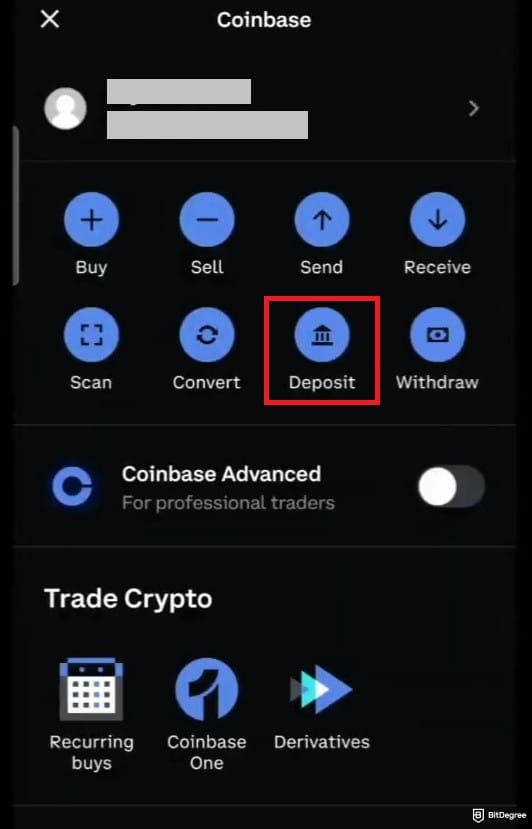
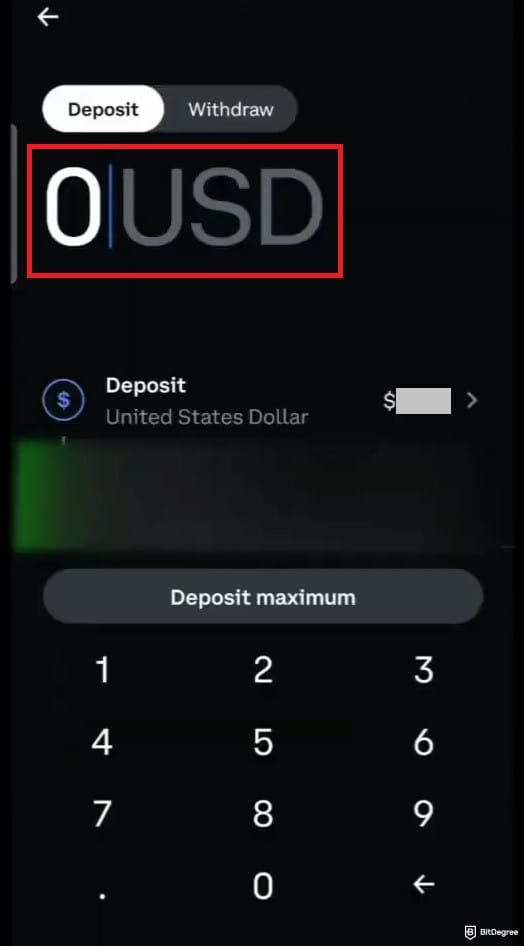
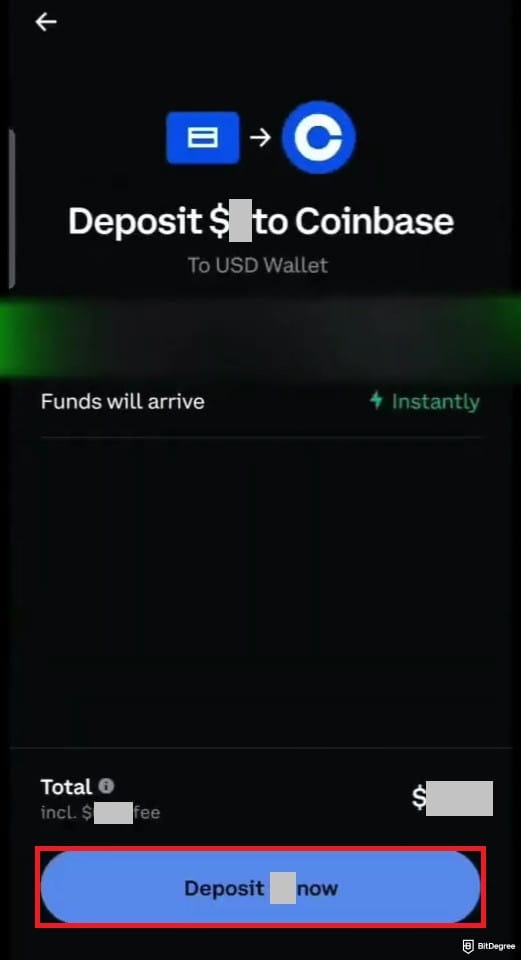
Once done, your funds should appear in your transaction history and account balance. With the USD balance, you’re ready to navigate to the platform’s Advanced section and execute the steps on how to short a coin on Coinbase.
Navigate to Coinbase Advanced
Once your base Coinbase account is ready and verified, there's no need to create a new account for accessing the Advanced interface because it's built into your existing account. To access it, simply:
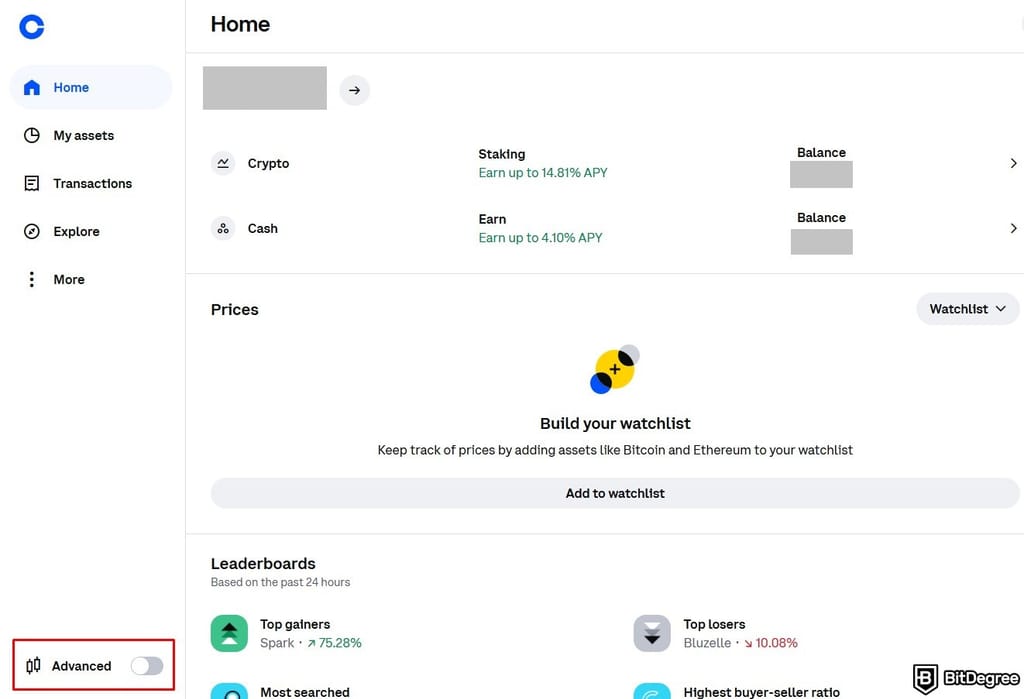
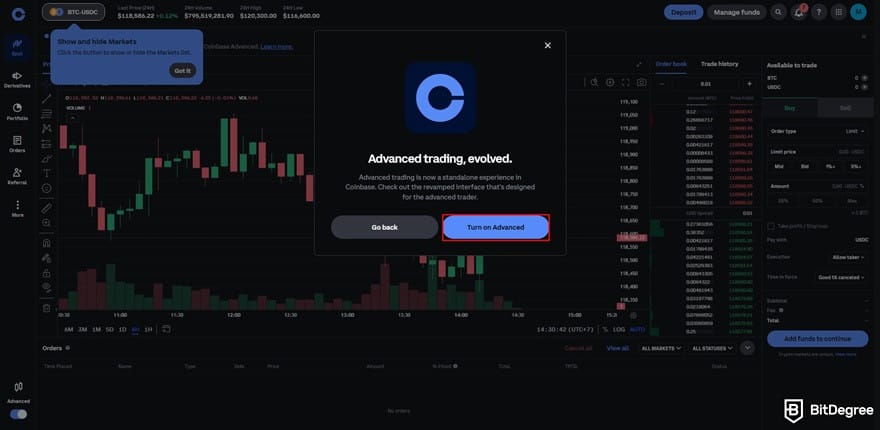
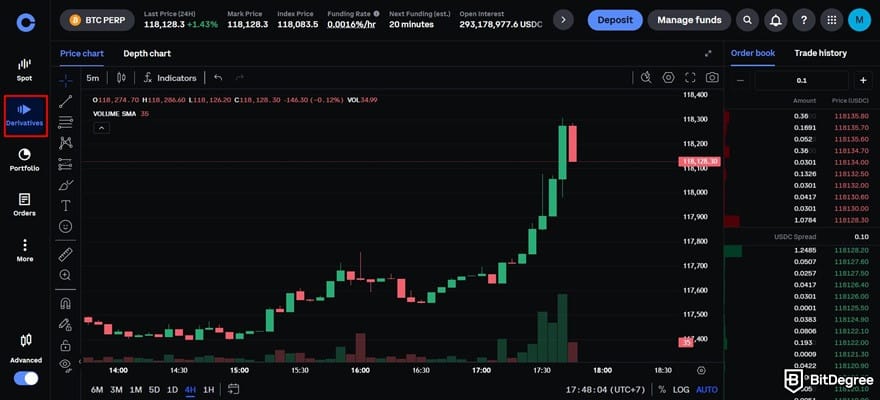
If the purchasing feature isn’t available in your country, the terminal will display in view-only mode. This means you won’t be able to open or close any futures positions – putting your Coinbase short selling journey on hold. Still, you can explore the interface, monitor price charts, and familiarize yourself with the platform's features.
In case you're in this situation, consider exploring alternative platforms that support broader international access (more on this later in the article).
Place an Order
Before we're moving on to the core section of how to short a coin on Coinbase, be aware of the trading hours and market closures on this platform. You can trade BTC, ETH, SOL, and XRP futures 24/7, except for a one-hour maintenance break every Friday from 5 PM to 6 PM ET.
Other futures markets are available from Sunday at 6 PM ET through Friday at 5 PM ET, with a daily one-hour break from 5 PM to 6 PM ET, and remain closed during market holidays.
Additionally, take some time to get familiar with the interface – you should see a list of available coins and markets on the left, a price chart, order book, and trade history in the center, and the order entry panel on the right side of the trading terminal.
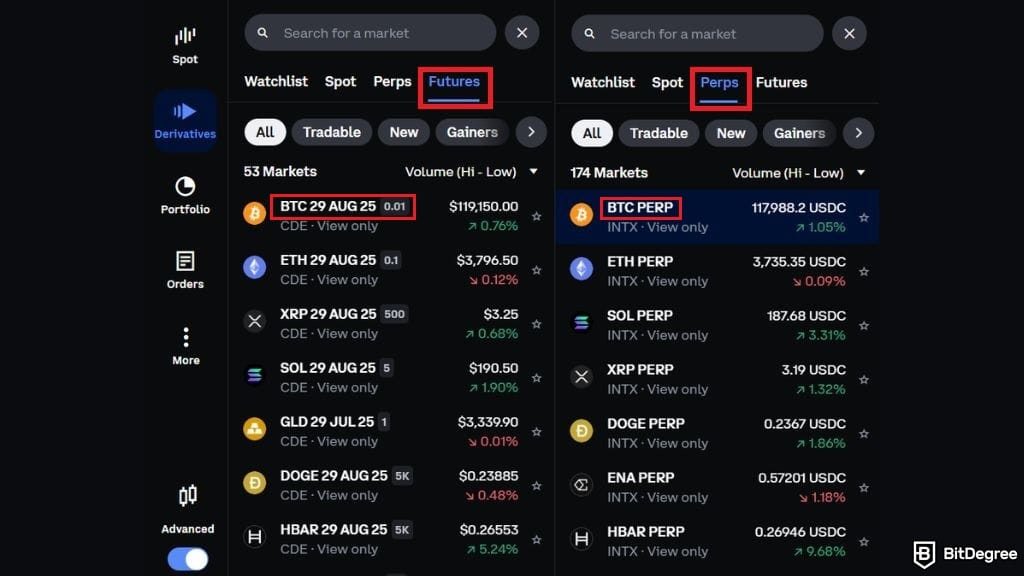
There are [Perps] and [Futures] menus on the left sidebar. Which one should you pick? "Perps" or perpetual futures are derivative contracts that never expire. Meaning, you can hold them indefinitely as long as you maintain your margin. The downside is that you may pay funding fees.
Meanwhile, "Futures" are contracts with a fixed expiration date, usually monthly or quarterly. At expiry, the contract settles: you either own the asset or settle in cash. This option is ideal for planning around specific events or expiry cycles, but you must monitor and roll positions before expiry to stay active in the market.
In the order entry panel, you can see several order types to choose from:
1
Market order. It executes immediately at the best available price. This type can be useful for fast entry or exit, but may suffer from slippage in fast-moving markets.
2
Limit order. With this type, you specify the exact price to buy or sell. It allows precise control over your trade, though execution isn’t guaranteed if the market doesn’t reach your price.
3
Stop-limit order. This combines a trigger price (stop price) and a limit price. When the stop price is hit, a limit order is placed to execute your sell or buy at or near your limit to help manage risk more smartly.

4
Bracket order. This is essentially an OCO (One-Cancels-the-Other) type order for futures. So, once your position fills at the main price, it places both your desired take-profit limit and stop-loss limit simultaneously. When one side executes, the other automatically cancels to manage trades automatically.
5
TWAP (Time-Weighted Average Price). This splits your order into smaller chunks executed over a set time, targeting the average price across that period. Ideal for large trades or reducing market impact. TWAP is supported on Coinbase Advanced and works with derivatives.
Now that you're familiar with the trading terminal and its elements, let’s walk through the steps on how to short crypto on Coinbase:
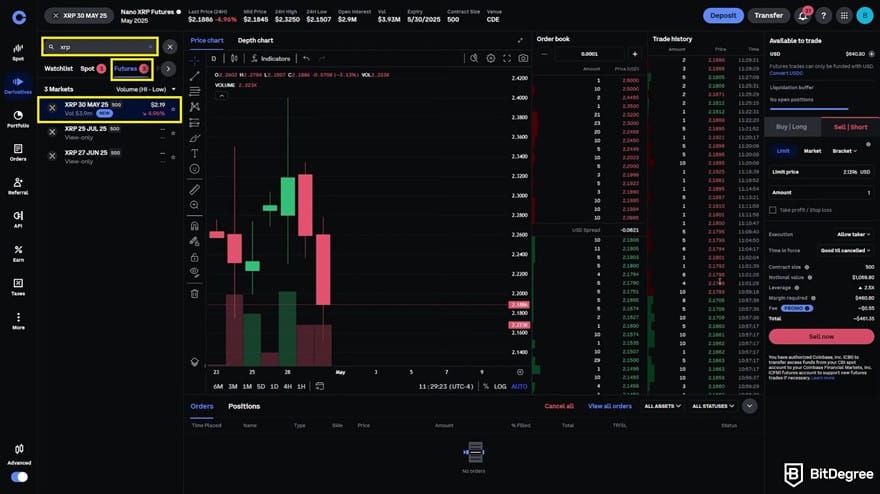
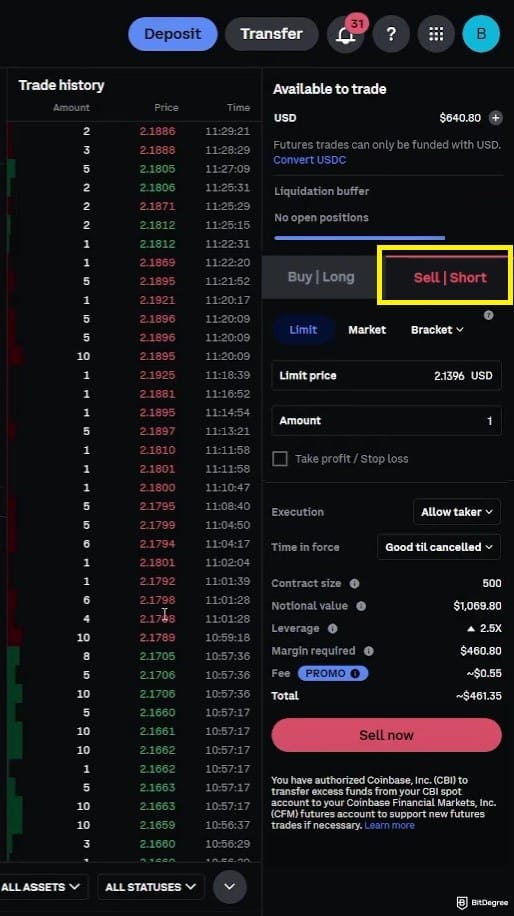
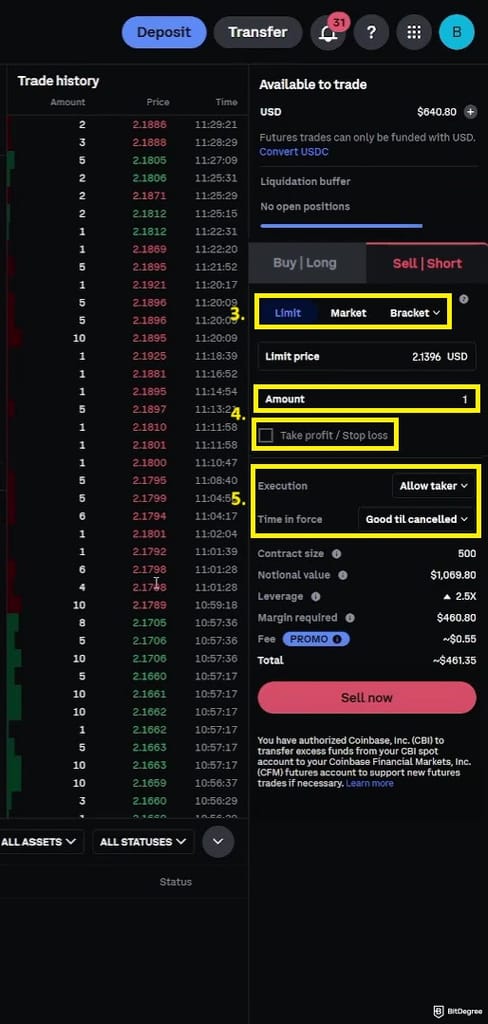
- The leverage setting is 2.5x, which indicates how much you're borrowing to amplify your position.
- The margin required is the amount of your own funds that must be committed to open the trade.
- The notional value represents the total trade size when leverage is applied.
- The fee refers to the amount you’re charged for executing the order, which may vary depending on promotions or your account tier (I’ll elaborate on this further in the article).
- The total gives you an estimate of how much you’ll need to open the position, combining the margin and any applicable fees.
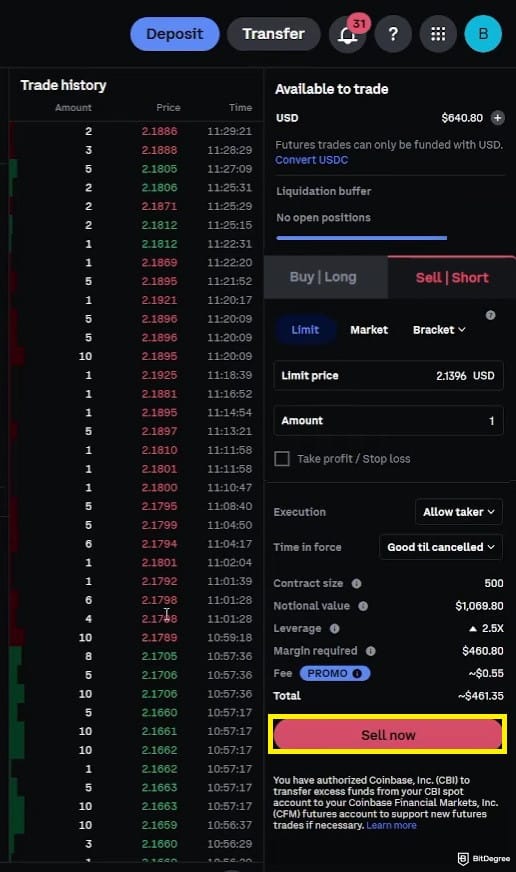
Those are the steps on how to short on Coinbase using the [Derivatives] trading interface. However, this is not the end. After entering the trade, it’s crucial to monitor your position closely.
📚 Read More: How to Trade Futures on Coinbase

Did you know?
Subscribe - We publish new crypto explainer videos every week!
What is Polkadot in Crypto? (DOT Animated Explainer)



- Secure and reliable
- Accepts fiat currencies
- Lots of trading options
- Reputable exchange
- Accepts fiat currencies
- Offers various trading options

- Huge trading variety
- Regulation-compliant around the globe
- Fair trading fees
- Beginner-friendly
- A wide array of features
- Vast number of different crypto coins & tokens

- Beginner-friendly
- Secure
- Decent trading and withdrawal fees
- Crypto.com Visa Card
- Automated tools & bots
- Ecosystem synergy with CRO
Monitor Margin and Avoid Liquidation
After hitting the [Sell now] button with your selected limit price in the previous step (e.g., 2.1396 USD), your short order enters the market. If the price hasn’t reached your limit, the order stays open and unfilled.
Once it’s filled, your short position becomes active – this is when close monitoring becomes crucial.
Let’s say you shorted XRP tokens at $2.1396 with 2.5x leverage, giving you a $1,069 notional value. If the price drops to $2.00, your position moves into profit, since you sold high and can now buy back at a lower price. At this stage, watching your unrealized profit/loss helps you decide whether to take profit or hold for further decline.
On the flip side, if the price rises above your entry, such as to $2.20, you’re in a losing position. Monitoring helps you set a stop-loss or react quickly before losses widen.
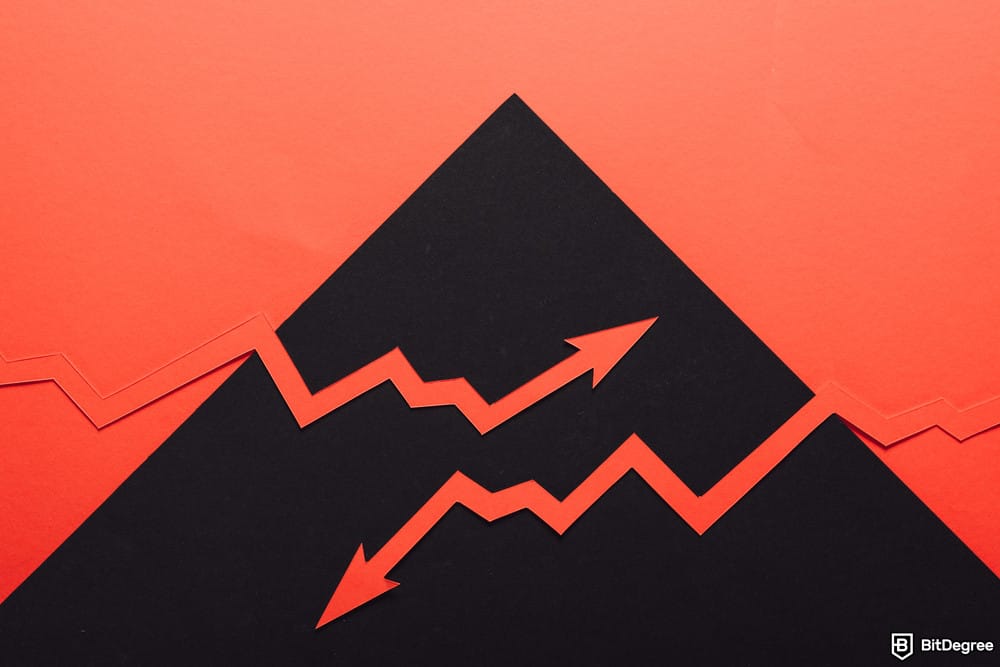
You may also want to track the average entry price, especially if you’ve added to the position in parts, as well as overall market trends, volume, and order book depth. This real-time analysis helps you make informed decisions, like closing the trade or adjusting your strategy.
Margin trading and short selling are about improving market price efficiency,[1] so keep an eye on price movements and stay informed about market news that can affect your trade, especially in volatile markets where price swings can happen fast.
Fees to Expect When Shorting on Coinbase
Can you short crypto on Coinbase for free? Sadly, the answer is no. Like most platforms, Coinbase charges various fees that traders must understand before placing a trade, especially when using leverage.
Generally, Coinbase applies a tiered fee system based on your 30-day notional trading volume, meaning the higher your trading volume, the lower your fees may be.
Both the opening and closing sides of your futures trades count toward this volume calculation. Fees are charged per contract, per side, with a minimum fee of $0.15, although this minimum may be changed during promotional periods. Additionally, Coinbase may offer temporary discounts to encourage more trading activity.
If your position gets liquidated (i.e., forcibly closed due to insufficient margin), Coinbase Financial Markets charges a liquidation fee of 10 basis points (0.10%) per transaction. This fee only applies when the liquidation is executed by Coinbase itself.
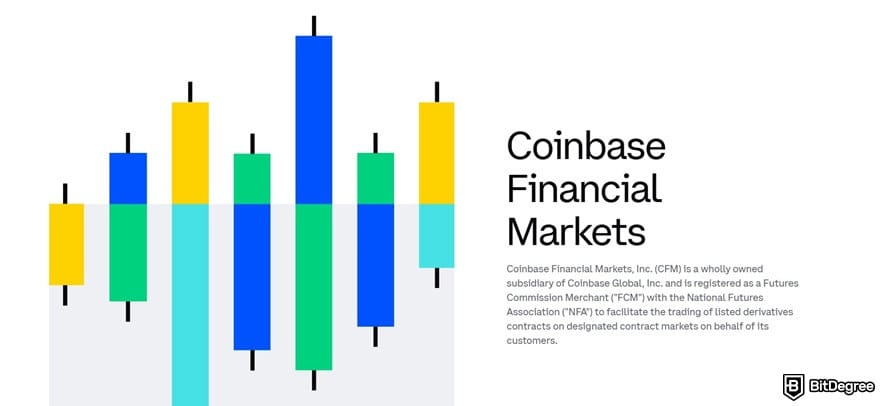
It's also worth noting that funding rates may apply to certain futures contracts, depending on market conditions, and these can add to your overall costs if you hold positions for extended periods.
Holding a short position over time may involve funding rates, which are interest-like payments that vary depending on market sentiment. These are not always fixed and can add up, especially during periods of high volatility or if you’re holding a trade for multiple days.
To sum up the information, here’s an overview table for you:
Fee Type | Details |
|---|---|
Trading fees | Tier-based, per contract, per side |
Minimum fee | $0.15 (may be waived in promotions) |
Liquidation fee | 0.10% per transaction if liquidated by Coinbase |
Fee tiers calculation | Based on notional volume from both opening and closing legs |
Promotions | Fee discounts may apply periodically |
Table: Coinbase Advanced fees for derivatives
All futures products and services are registered with the National Futures Association (NFA). This means that Coinbase operates under regulatory oversight in the US, providing a layer of protection and transparency for users trading futures on the platform.
📚 Read More: Coinbase Fees
What are the Best Platforms to Short Crypto?
Learning how to short Bitcoin on Coinbase may be smooth, but how about other crypto or with more advanced strategies? While Coinbase has done a decent job of helping users short crypto, especially with its intuitive interface and regulated futures products, it comes with certain limitations.
I found that it has strict regulatory restrictions, limited leverage options, and a smaller selection of futures contracts compared to some other platforms. If you're looking for more flexibility, higher leverage, or a broader range of altcoin markets, here are some alternative platforms to consider for shorting crypto:
- Binance. Binance offers various derivatives, including USDT-margined and coin-margined futures. It supports high leverage, a user-friendly interface, and advanced tools like stop-loss, take-profit, and cross or isolated margin.
- Bybit. It’s a crypto exchange that has earned a solid reputation for its derivatives feature, fast order execution, and competitive fees. It offers inverse perpetual contracts and USDT perpetuals with leverage options up to 100x. Bybit also provides testnet access, which is ideal for practicing shorting strategies without risking real funds.
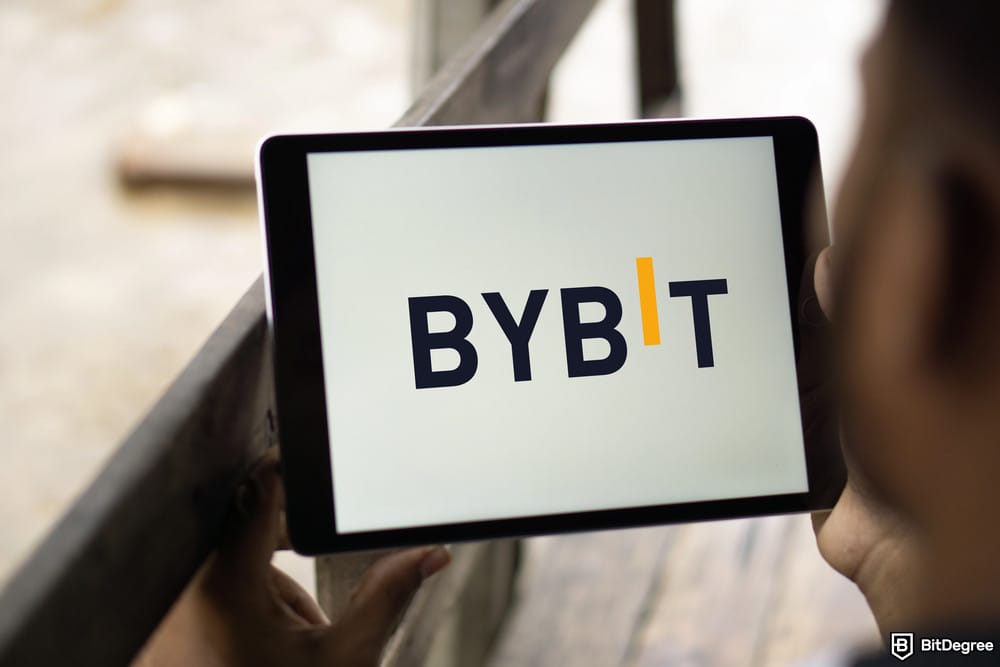
- Kraken. This exchange supports margin trading with up to 5x leverage. Though not as feature-rich as Binance or Bybit for shorting, Kraken’s transparency and strong regulatory compliance (especially in the US and Europe) make it a good option for risk-averse users.
- OKX. It provides both spot and futures markets with competitive fees and a comprehensive suite of tools for shorting. Its intuitive interface and mobile app make it convenient to short cryptocurrencies on the go. Moreover, it operates in 100+ countries, including the US with its 47 states.
- MEXC. MEXC has a strong focus on altcoins. It provides up to 200x leverage on futures contracts and offers a wide range of trading pairs. The platform also features staking and passive income tools, allowing traders to hedge or short while earning yields on idle assets.
As you become more comfortable with the process of shorting crypto on Coinbase (with its limitations), you may find yourself wanting more. That’s why it’s worth exploring other platforms if you’re aiming to step up your shorting strategies.
📚 Read More: Coinbase Alternatives
What are the Key Considerations When Shorting Crypto?
Shorting crypto may seem like a smart move when the market is trending downward, but it also comes with its risks. Even if you're using a user-friendly platform like Coinbase, understanding the potential downsides is crucial before placing a trade. Here are some key risks to keep in mind:
1
Regulatory restrictions. Depending on where you live, your ability to short crypto may be limited by local laws.[2] Some regions prohibit margin or futures trading altogether, while others restrict access to certain platforms.
2
Market volatility. The crypto market can be unpredictable since prices can jump or crash in minutes. When you're shorting, this fast movement can either help you make money or quickly lead to losses.
3
Leverage risk. Leverage lets you borrow money to make a bigger trade, which means you can earn more and potentially lose more. For example, if you’re using 10x or 20x leverage and the price moves just a little against you, your trade could get closed automatically.

4
Margin requirements and liquidation. When you short crypto via futures, you’re required to maintain a certain margin balance. If your margin falls below the maintenance threshold, your position may be automatically liquidated to cover losses.
5
Fees and funding rates. Shorting isn’t free. Futures platforms charge trading fees, and many perpetual contracts also include a funding rate, which is an interest-like cost paid periodically depending on market conditions. These costs can add up, especially if you hold a position for a long time.
6
Market timing. Successfully shorting crypto isn’t just about predicting that the price will fall because, more importantly, you need to know when it will fall. Entering too early or too late can affect your outcome. Many traders make the mistake of shorting into upward momentum, only to get liquidated before the market reverses.
7
Emotional discipline. Shorting can be stressful, especially during volatile price swings. If the market starts moving against you, it’s easy to panic and make irrational decisions.
With such a list of considerations, can you short crypto on Coinbase as a beginner? Yes, but always approach it with caution. While Coinbase offers a beginner-friendly interface with various helpful tools, it doesn't eliminate the risks entirely. Beginners should start small, avoid high leverage, and take time to understand market behavior before placing real trades.
Tips for Shorting Crypto
Before executing the steps on how to short crypto on Coinbase or another exchange, take time to compare different platforms by considering these aspects:
- The fees (like trading and liquidation fees);
- Regulatory availability in your country;
- Payment methods they accept (crypto-only or bank transfer/card support);
- How easy the platform is to use.
Also, my tip is to prioritize platforms that offer some form of insurance protection. Exchanges like Binance and Bybit have insurance funds or similar mechanisms that help cover losses when the market becomes extremely volatile.
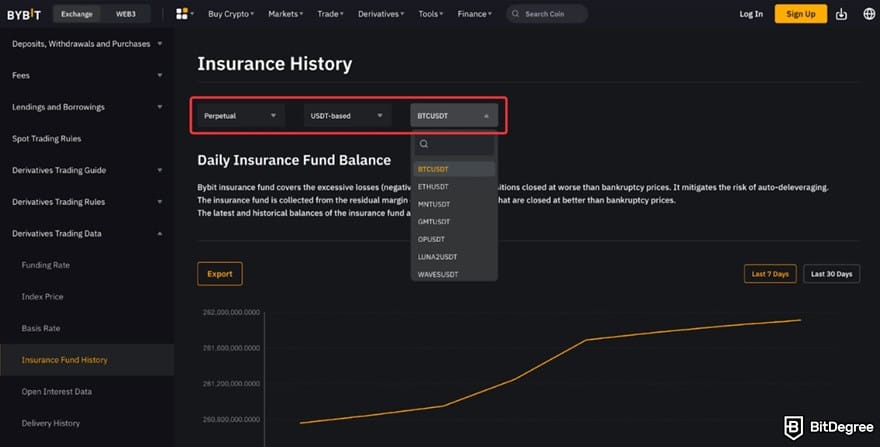
These funds can step in during big price swings to reduce the risk of users losing everything or being hit with auto-deleveraging. It’s an extra safety net that can make a big difference, especially for someone new to crypto shorting.
Once you decide on a platform, get familiar with how the platform works. Learn about the different order types (such as market, limit, or stop orders), and understand how leverage and funding fees impact your trades.
If the exchange offers a demo or practice mode (like a testnet), use it to try shorting without risking real money.
Moreover, shorting may come with hidden costs. Most platforms charge a fee when you open and close trades, and some have liquidation fees (for example, Coinbase charges 0.10% when it closes your position). If you're using perpetual futures, you also pay funding rates, which can add up the longer you hold your trade.
Timing matters, too, because crypto prices can jump or crash within minutes. A common mistake is shorting too early or while the price is still going up, which can get you liquidated fast. Using tools like charts, indicators, and stop-loss orders can help you enter and exit more safely.

More importantly, always be honest about your financial situation. Leverage can boost your profits, but it can also worsen your losses. So, my tip is never trade with money you can’t afford to lose. If prices move against your trade, you could be liquidated, even if it’s just a small swing.
Conclusions
Now that you’ve seen how to short crypto on Coinbase, remember that opening a position is only part of the journey. You need to keep an eye on price movements, manage your risk, and adjust your strategy as needed.
If Coinbase Advanced, specifically the "Derivatives" option, isn’t available in your country, feel free to explore trusted alternatives like Binance or Bybit. With practice and the right mindset, you can build more confidence shorting crypto across platforms.
Discover everything you need to know about Coinbase on BitDegree's Guild.
The content published on this website is not aimed to give any kind of financial, investment, trading, or any other form of advice. BitDegree.org does not endorse or suggest you to buy, sell or hold any kind of cryptocurrency. Before making financial investment decisions, do consult your financial advisor.
Scientific References
1. Strych J.: 'The Impact of Margin Trading and Short Selling by Retail Investors on Market Price Efficiency: Empirical Evidence From Bitcoin Exchanges';
2. Cumming D. J., Johan S., Pant A.: 'Regulation of the Crypto-Economy: Managing Risks, Challenges, and Regulatory Uncertainty'.
